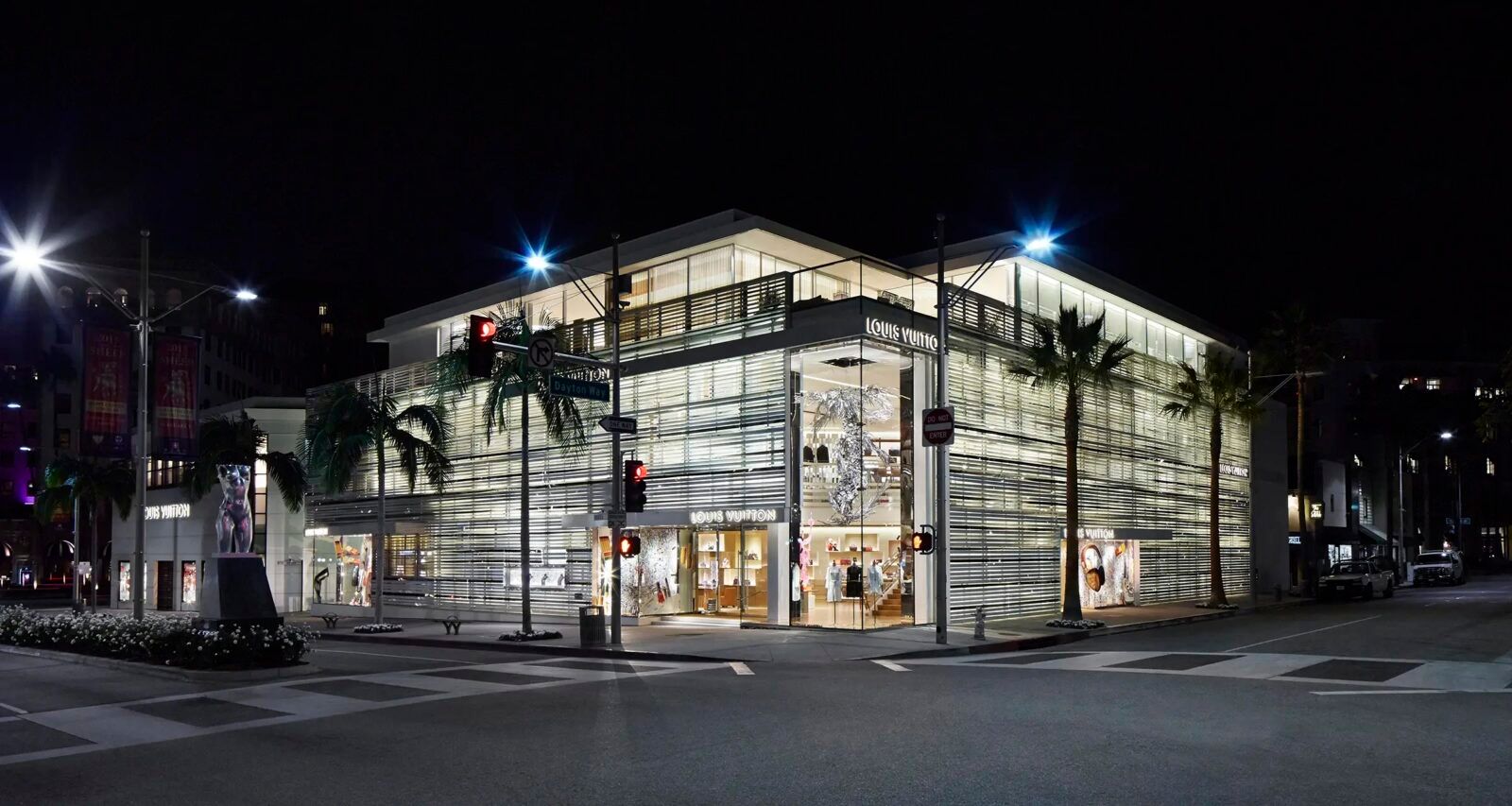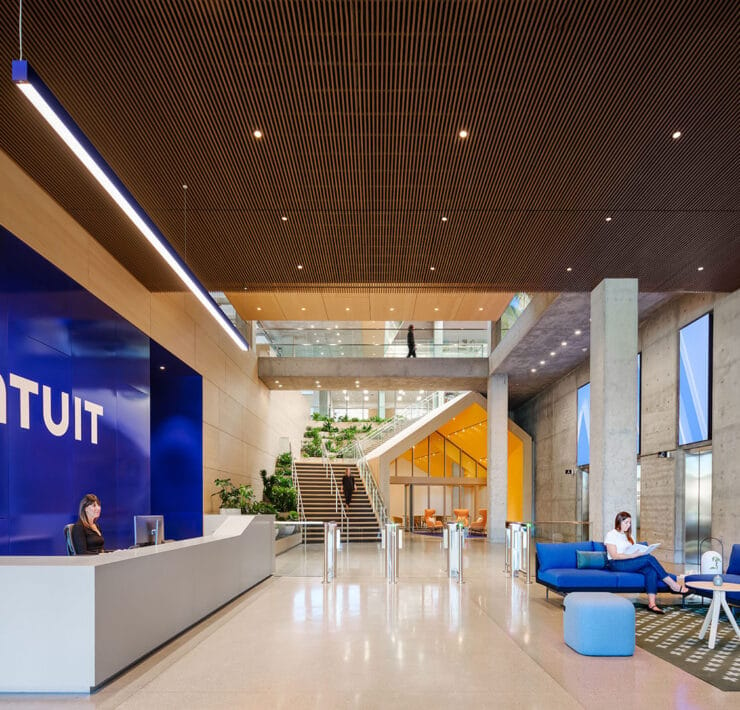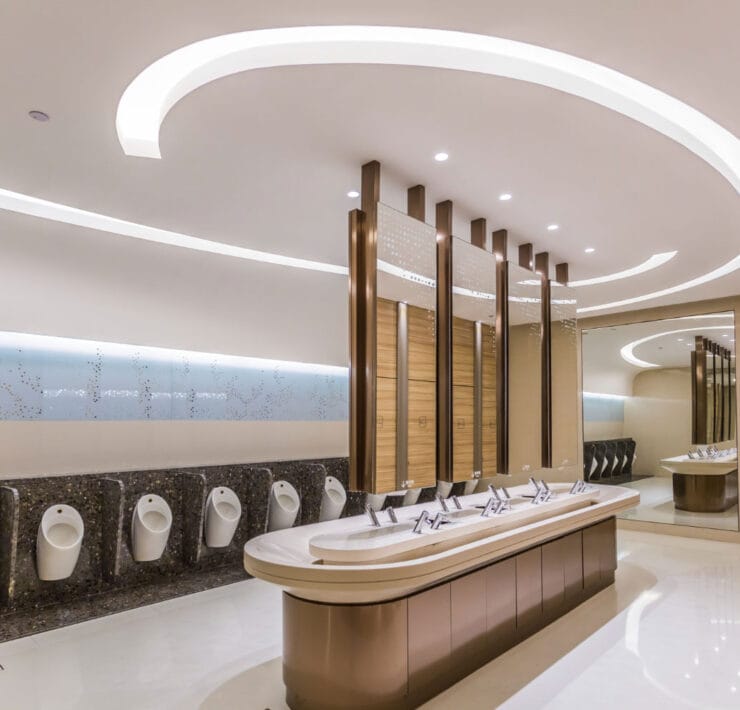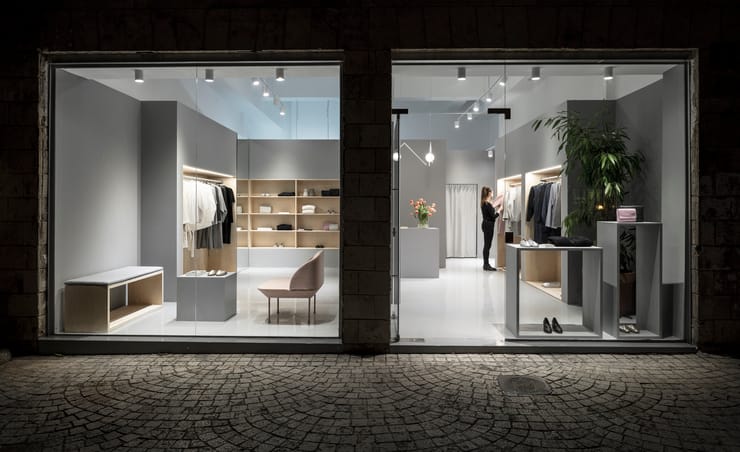Retail crime costs businesses up to $112 billion each year, and the problem is escalating. An annual survey by the National Retail Federation (NRF) found that 78 percent of retailers report an increase in the threat of Organized Retail Crime (ORC) compared to just a year ago.
While retailers have long understood the value of using lighting to attract customers, its role in crime prevention is often overlooked. Law enforcement agencies, including the Beverly Hills Police Department, are now working to raise awareness about how strategic lighting can serve as an effective deterrent against retail crime.
This guide outlines standards from the Illuminating Engineering Society (IES) on achieving optimal lighting levels in and around commercial properties to help deter criminal activity. We also spoke with BHPD Community Relations Sergeant Jeff Newman for the law enforcement perspective on how lighting can boost business security.
Table of contents

The growing threat of retail crime
According to the NRF, retail crime surged by 26.5% in the past year. Smash-and-grab robberies are particularly concerning, as they involve groups of thieves breaking into stores during closed hours and stealing high-value merchandise. These ORC crimes are not only financially damaging but also pose safety risks for employees and customers.
The threat from ORC is so great that many lawmakers have taken steps to address the issues with new legislation. California recently passed landmark legislation to protect retail stores from smash-and-grabs and petty crime, with Governor Newsom calling the measures, “the most significant the most significant legislation to address property crime in modern California history.”
However, while these new laws increase felony charges and expand prosecution for retail crime, the challenges these crimes pose to business owners remain a significant threat to business. In fact, one in four retailers surveyed say they’ve closed store locations in response to criminal threats.
How light can deter crime
Lighting serves as both a physical and psychological deterrent to criminals. Well-lit environments increase the likelihood of being observed and caught, reducing a thief’s incentive.
Studies show that adequate lighting and proper fixture placement can reduce the likelihood of businesses being targeted. One study from New York found the use of LED lighting resulted in a 39% decrease in nighttime robberies.
“Time and again, we’ve seen statistics and studies that show that the more light, the better,” said Jeff Newman, Beverly Hills Police Department’s Community Relations Sergeant. “Most people don’t want to commit a crime in the light. Take something as simple as an officer driving by at night — if all lights are off, it’s harder for the officer to see someone. If there’s light, you see someone rummaging through a store in a ski mask as an officer’s driving by. That’s going to get your attention. You’re going to see it.”
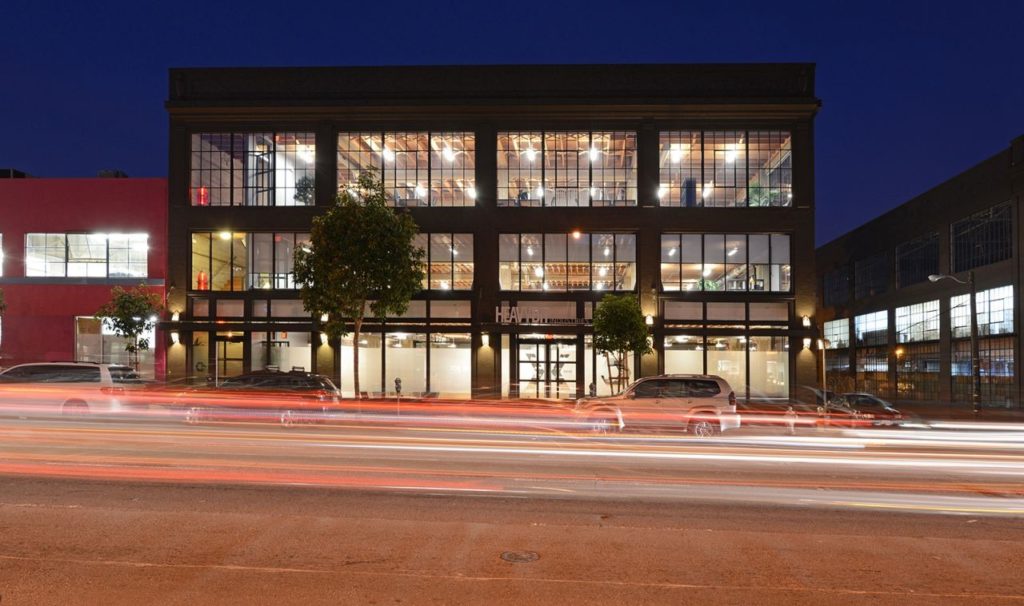
Part of Newman’s role in BHPD Community Relations involves raising awareness of how business owners can protect against crime. The BHPD offers a free risk assessment that store owners can use to improve security. The tips often include improvements to both interior and exterior lighting, including modernizing fixtures to light-emitting diode (LED) technology.
“Before LED, there was a distinct difference in what you could see. The old lights were warmer, and had a calming effect. But they didn’t let the [police] officer see with clarity. When you’d see someone lurking on a sidewalk, you want to know: is it a person who’s walking their dog or someone who’s creeping around?” Newman explains. “Certainly, as a patrol officer, I see the difference lighting makes.”
Enhancing retail security with the right fixtures
Proper exterior and interior lighting plays a crucial role in preventing crime. Effective lighting design not only creates a welcoming environment for customers but also discourages loitering and unwanted behavior. Exterior lighting, including landscape and facade illumination, has the most significant impact on boosting a business’s safety and security. Achieving the right balance of light levels and contrast is key; lighting that is too bright can cause glare, while insufficient lighting reduces visibility.

Ensuring adequate illumination around storefronts and surrounding areas is essential for safety during and after business hours. Well-planned lighting helps people’s eyes adjust more comfortably when transitioning between lighter and darker areas, enhancing both safety and visual comfort for customers and pedestrians.
“An opportunistic criminal doesn’t want to get caught and will do everything to avoid light,” Newman continues. “We do see that pedestrian-focused lighting is ideal. So, if you have something that is shining up on a wall—or a wall pack that shines down—but it’s really only illuminating a very small place instead of a larger area—that is less effective than something that’s pedestrian-focused.”

“If you have some sort of shielding that is forcing that light down—a parking lot is a good example—and you see a giant light bulb that’s basically illuminating the sky and [casting] some [light] below that’s not focused, you’re wasting some of that light.”
Exterior perimeter lighting
Outdoor perimeter lights offer an easy way to fully illuminate the facade of a retail store. Waterproof LED strip lights cast uniform light across a building’s exterior. This approach not only highlights architectural features but also enhances safety and security by improving visibility along the perimeter. When strategically placed, wall-wash lighting can effectively deter criminal activity while adding aesthetic appeal to the property.


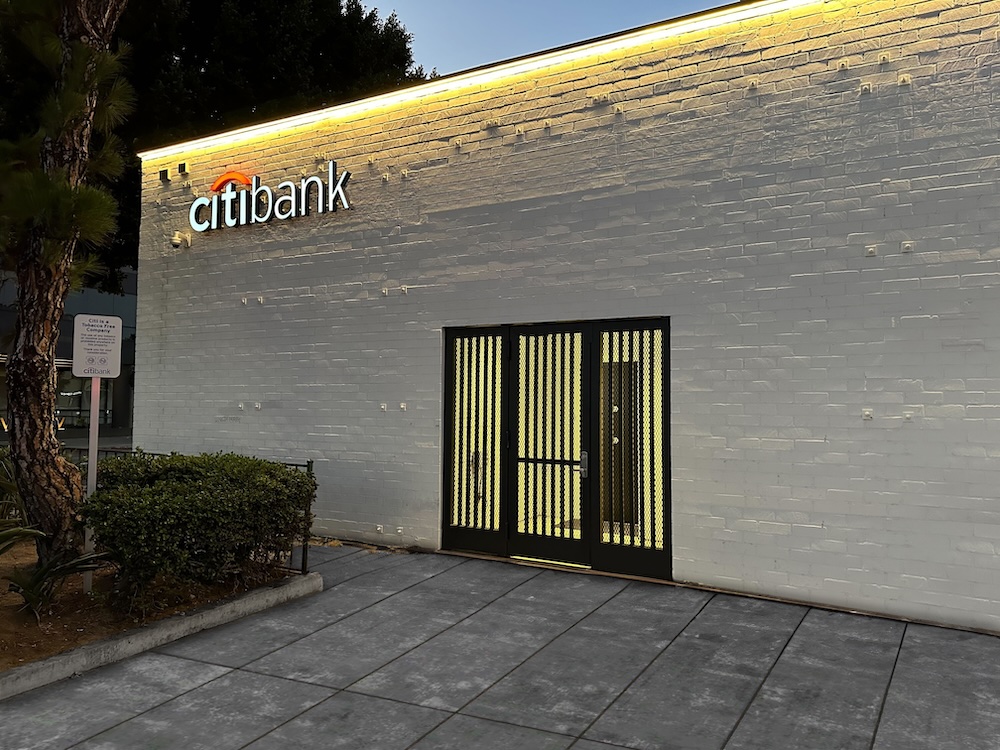


How bright should lights be to improve security?
When it comes to enhancing security, the brightness of lighting plays a crucial role. Achieving the right illumination levels deters criminal activity by improving visibility and reducing dark areas where intruders could hide. However, it’s important to strike a balance—lighting that’s too bright can cause glare and make it harder to see, while lighting that’s too dim may not provide enough visibility to be effective.
“In Beverly Hills, we have over 2,500 closed circuit TV cameras and a lot of them are in the business district,” Newman continues. “You can actually see [crime] with better clarity, thanks to LED lights, which give the best bang for your buck to identify license plates, clothing descriptions, what people look like and for the cost of keeping lighting on at night lower as well.”
Light intensity is measured in footcandles, which indicate how much light falls on a given surface. Contrast ratios reflect the difference between the darkest and brightest areas of illumination. Here are some recommended lighting levels for exterior commercial spaces in typical urban settings:
| Space type | Avg. light level in footcandles (fc) | Contrast ratio |
|---|---|---|
| Building entrances | 2-5 fc (horizontal), 1-3 fc (vertical) | 5:1 |
| Driveway and parking | 1-2 fc (horizontal), 0.5-1 fc (vertical) | 3:1 (horizontal), 6:1 (vertical) |
| Shopping promenades | 0.5-1 fc (horizontal), 0.2-0.5 fc (vertical) | 5:1 (horizontal), 10:1 (vertical) |
| Ramps, stairs, steps | 3-4 fc (horizontal) | 5:1 |
| Plazas | 0.2-0.6 fc (horizontal), 0.1-0.2 fc (vertical) | 5:1 (horizontal), 10:1 (vertical) |
| Walking surfaces | 1-3 fc (horizontal) | 10:1 |
| Walls and fences | 0.2-2 fc (vertical) | n/a |
| Facades | 0.2-1.5 fc (vertical) | n/a |
Fixture placement that fosters retail security
Strategically placed light fixtures are essential for enhancing retail security. Properly aimed lights minimize dark areas and eliminate shadows that could conceal criminal activity. Conversely, poor placement can result in excessive glare or high-contrast zones that reduce overall safety.

Officer Newman recommends prioritizing lighting at two critical locations:
- The building’s front facade
- Any areas visible from the street
“If someone’s standing in front of your building, you can see that very clearly,” he noted. Lights placed on exterior walls, near entrances and along windows help make any suspicious activity noticeable from both inside the store and from the street, aiding law enforcement in monitoring the property.
For businesses with large layouts or multiple sections, maintaining a consistent lighting scheme is important. Illuminate key areas, such as storefront windows and main entrances. Less critical zones, such as storage rooms, can remain unlit if they are not visible from the street.
“If your business has one window and a door, then the place where the window is should have a light on to show anything to see inside,” Newman explains. “If you have a multiple-roomed office or the main floor of the business is lit, and the storage area’s in the back, and you have the lights off, that makes sense because I’m not gonna be able to see in there anyway while driving by the street on proactive police patrol.”

In some cases, the strategic use of glare-heavy lighting can deter intruders. High-output floodlights with minimal glare cutoff, paired with motion detectors, can create a disorienting effect when activated. The burst of intense light can startle intruders, drawing attention to their presence and making them more likely to flee.
Key takeaways in lighting a business for better security
General principles
- Take advantage of free police assessments to identify potential security vulnerabilities
- Take a multi-layered approach to security, combining lighting with other measures, such as security cameras, access controls and physical barriers
- Incorporate design elements that discourage criminal activity, such as well-lit entrances, walkways and clear sight lines
Lighting design considerations
- Ensure adequate illumination levels in entrances, parking lots and perimeter boundaries. Follow IES recommends for recommended footcandles
- Minimizes shadows and dark spots that could conceal potential threats with uniform lighting
- Avoid excessive glare from lights that can hinder police and camera visibility
- Choose products that offer long life, high efficiency and superior color representation, such as LED
- Position fixtures to illuminate key areas and deter intruders, considering factors such as placement, light distribution and surveillance visibility
- Implement lighting control systems that allow for remote monitoring and management
IES guides:
- IES G-1-22 focuses on lighting design for infrastructure, such as government buildings, power plants and transportation hubs
- IES RP-2-20 offers guidelines for achieving high-quality, energy-efficient lighting in retail spaces
- IES RP-43-22 provides pedestrian-oriented illumination recommendations for outdoor environments
Read the full interview with Sergeant Jeff Newman on Language of Lighting.
Alcon Lighting creative director and co-founder David Hakimi works to improve lighting through research, development and education. David strives for efficiency in lighting, affording architects, lighting designers and engineers the ability to maximize LED lighting design and application. David is a graduate of the University of California, Los Angeles, where he received a Bachelors in history. David also studied lighting design at IES in Los Angeles. He traces his and Alcon Lighting’s commitment to innovation, accountability, quality and value to lessons learned from his father, Mike Hakimi, a lighting craftsman, salesman and consultant in Southern California for more than four decades. Today’s lighting for commercial use requires a deep, complete understanding of smart lighting systems and controls. David takes pride in his lighting, energy controls and design knowledge. He is driven by the desire to share his insights into lighting specification and application. This quest to share his knowledge was the impetus for David to create Insights, Alcon Lighting’s blog and resource center for helping the reader understand lighting and its application to space.

